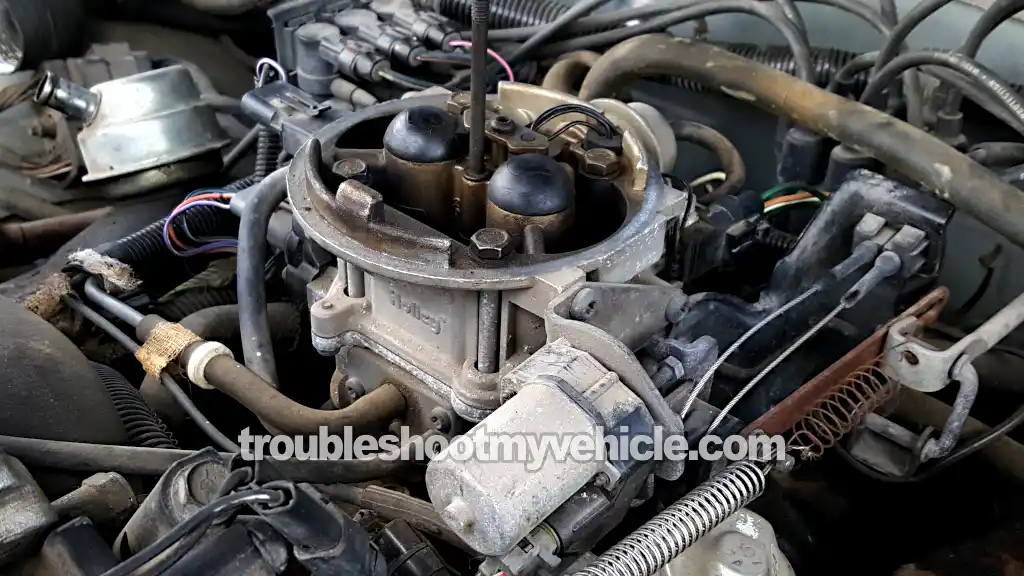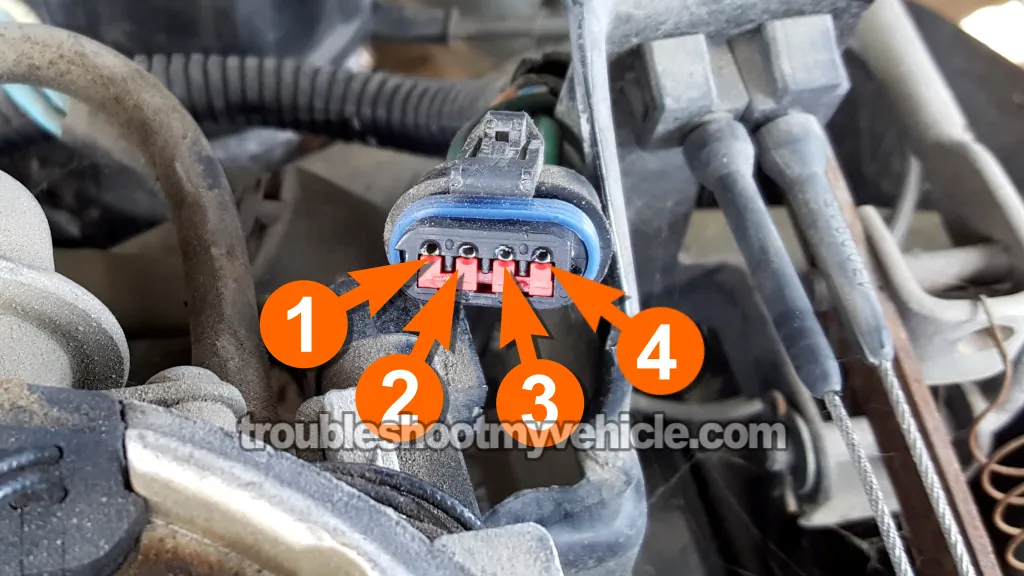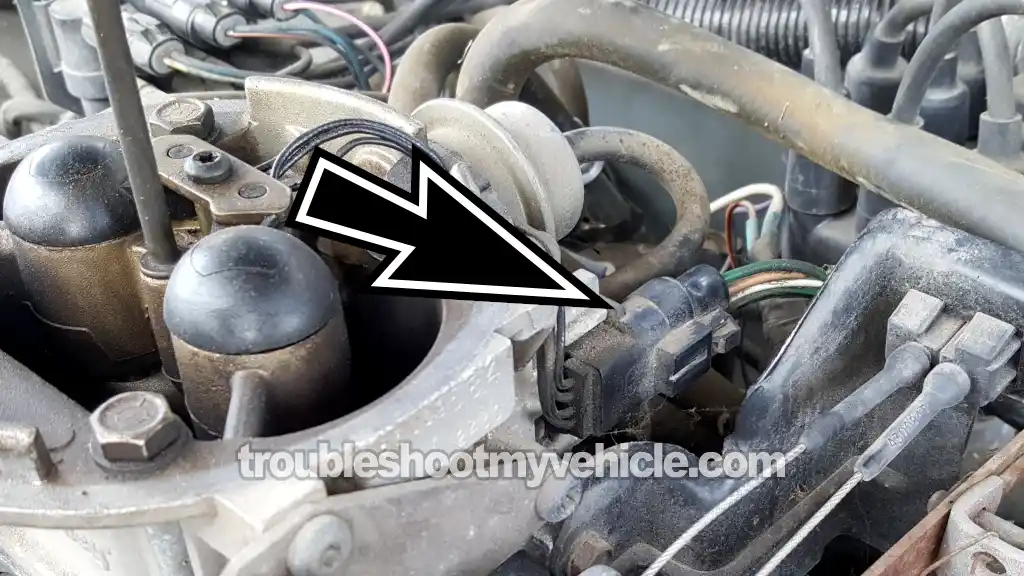
The 1989-1991 V8 Dodge Ram pickup is equipped with a TBI (throttle body injection) fuel system which uses two fuel injectors located on the throttle body.
Testing the fuel injectors, to find out if they've failed isn't difficult and in this tutorial, I'm gonna show you my step-by-step testing method.
Contents of this tutorial:
- Symptoms Of A Bad Fuel Injector.
- Where To Buy The Fuel Injector And Save.
- TEST 1: Checking The Fuel Injectors' Spray Pattern.
- TEST 2: Making Sure The Fuel Injectors Are Getting Power.
- TEST 3: Fuel Injector Resistance Test.
- TEST 4: Fuel Injector Activation Signal Test.
- TEST 5: Making Sure The Fuel Injector Is Getting Power.
- TEST 6: Making Sure The Fuel Injector Is Getting An Activation Signal.
- Tech Tip: Always Replace Injector O-Rings.
- More 5.2L, 5.9L V8 Dodge Ram Pickup Tutorials.
APPLIES TO: This tutorial applies to the following vehicles:
- Dodge Ram 150 Pickup 5.2L V8: 1989, 1990, 1991.
- Dodge Ram 250 Pickup 5.2L V8: 1989, 1990, 1991.
- Dodge Ram 150 Pickup 5.9L V8: 1989, 1990, 1991.
- Dodge Ram 250 Pickup 5.9L V8: 1989, 1990, 1991.
- Dodge Ram 350 Pickup 5.9L V8: 1989, 1990, 1991.
FUEL INJECTOR WIRING DIAGRAMS:
- Fuel Injector Circuit Wiring Diagram (1989 5.2L, 5.9L V8 Dodge Ram Pickup).
- Fuel Injector Circuit Wiring Diagram (1990-1991 5.2L, 5.9L V8 Dodge Ram Pickup).
Symptoms Of A Bad Fuel Injector
The 1989-1991 5.2L and 5.9L V8 engines use a Throttle Body Injection (TBI) fuel system instead of a carburetor. These systems feature a dual-point throttle body with two injectors feeding the intake (one injector per throttle bore).
The most common fuel injector failures you're gonna encounter are:
- Bad fuel injector: One or both fuel injectors develop an internal fault and stop spraying fuel.
- Clogged fuel injector: Fuel injector sprays fuel, but not enough (clogged fuel injector) or doesn't atomize the fuel correctly (not in a conical spray pattern).
- Leaking fuel injector: Fuel injector leaks fuel when the engine is off.
- Fuel injector stuck open: Fuel injector stays ON all of the time (as soon as the engine is cranked), no injector pulses just powered ON all of the time. This is usually due to a bad fuel injection computer or an electrical problem in the fuel injectors' wiring.
These are some of the symptoms you're gonna see:
- Rough idle: The engine's gonna shake while idling.
- Misfires: The engine will misfire under load, especially when you accelerate.
- Lack of power: You'll notice a loss of power when accelerating your pickup.
- Bad gas mileage: Your pickup's already a gas hog, but now it's even worse.
- Engine no-start: If both fuel injectors aren't spraying fuel, the engine's not gonna start.
Where To Buy The Fuel Injector And Save
This is the TBI fuel injector that fits the 5.2L/5.9L V8 Dodge Ram pickups:
Disclosure: As an Amazon Associate, I earn from qualifying purchases. If my tutorials help you, using these links is an easy way to support the site at no extra cost to you. Thank you!
Not sure if the above fuel injector fits your particular V8 Dodge Ram pickup? Don't worry, once you get to the site, they'll make sure it fits by asking you the particulars of your vehicle. If it doesn't fit, they'll find you the right one.
TEST 1: Checking The Fuel Injectors' Spray Pattern

The first order of business is to check the spray pattern of the fuel injectors —either while cranking the engine (if it doesn't start) or while it's running (if it does start).
If the injectors are working properly, they should spray fuel in a conical pattern during both cranking the engine and while it's running.
During this test, here are the most common issues to watch out for:
- No fuel spray: One or both injectors aren't spraying any fuel.
- Fuel leaking: One or both injectors leak fuel when you turn the key ON (but don't start the engine), or after the engine has been shut OFF.
- Fuel squirting, not spraying: The injector is delivering fuel, but instead of a fine cone, it's squirting out in a stream.
CAUTION: You'll be working around a cranking engine, so be careful and take all necessary safety precautions.
These are the test steps:
- 1
Remove the air cleaner assembly from the throttle body.
- 2
Have a helper crank the engine.
- 3
From a safe distance, observe the spray pattern of both fuel injectors.
NOTE: A small flashlight will come in handy to get a good look at the spray pattern of each fuel injector. - 4
The spray pattern should be conical and identical for both fuel injectors.
Let's take a look at what your test results mean:
CASE 1: Both fuel injectors are spraying in a conical pattern. This is the correct and expected test result.
Since both injectors are producing an identical conical spray, you can conclude that they're functioning properly and:
- They're receiving power from the ASD relay.
- They're both getting activation signals from the fuel injection computer.
No further testing is needed. If the engine isn't starting or has performance issues, the injectors are not the cause.
CASE 2: One fuel injector isn't spraying fuel. This will definitely cause an engine performance issue.
The next step is to check the injector's internal resistance to see if it has developed an internal short or open circuit. Go to: TEST 3: Fuel Injector Resistance Test.
CASE 3: Both fuel injectors aren't spraying fuel. This usually means they're not receiving power or activation signals from the fuel injection computer.
Time to dig a little deeper. Your next step is to verify that both injectors are getting power. Go to: TEST 2: Making Sure the Fuel Injectors Are Getting Power.
CASE 4: One fuel injector is squirting or leaking fuel, instead of producing a proper spray.
This usually indicates a mechanical issue with the injector itself. It could be due to one of the following:
- Damaged or worn O-ring that's allowing fuel to leak around the fuel injector.
- A faulty injector that isn't atomizing fuel correctly —it's pushing out a stream instead of a fine mist.
Your next step is to remove this injector and replace its O-rings with new ones and retest.
TEST 2: Making Sure The Fuel Injectors Are Getting Power
NOTE: This test section only applies if both injectors are not spraying fuel and the engine isn't starting.
The fuel injectors are supplied with 12 Volts for about 3 seconds when you turn the key to the ON position but you don't crank the engine.
When you start cranking the engine and the fuel injection computer gets the distributor pickup coil signal, it sends a continuous supply of 12 Volts.
This supply of power is provided by the Auto Shutdown (ASD) relay and delivered to the fuel injectors by the dark green with black stripe (DK GRN/BLK) wire.
In this test section, we're gonna see if power is present both when just turning the key ON but engine OFF and when you're actually cranking the engine.
These are the test steps:
- 1
Disconnect the 4-wire fuel injector connector. See the photo above to identify this 4-wire connector.
- 2
Connect the black multimeter test lead to the battery negative (-) post.
- 3
Set your multimeter to Volts DC mode.
- 4
Gently probe the terminal 1 of the 4-wire connector with the red multimeter test lead.
Make sure that this connects to one of the dark green with black stripe (DK GRN/BLK) wires of the connector. - 5
Have you helper turn the key to the ON position but not crank the engine.
- 6
Your multimeter should register 10 to 12 Volts DC for around 3 seconds.
This is the key on engine off (KOEO) power test.
Power will get shut off by the fuel injection computer if the engine isn't cranked (this is normal). - 7
Now, have you helper crank the engine.
CAUTION: Be careful and keep your hands and tools away from any moving parts. - 8
Your multimeter should register 10 to 12 Volts DC the entire time the engine is cranking.
This is the key on engine running (KOER) power test. - 9
Repeat the voltage test on terminal 4.
NOTE: Make sure the terminal connects to the other dark green with black stripe (DK GRN/BLK) wire.
Let's interpret your test result:
CASE 1: 10 to 12 Volts are present in both KOEO and KOER parts. This is the correct and expected test result.
Now that we know the fuel injectors are getting power, we need to see if they're getting an activation signal. Go to: TEST 4: Fuel Injector Activation Signal Test.
CASE 2: 10 to 12 Volts ARE NOT present in both KOEO and KOER parts. Without power, the fuel injectors are not gonna spray fuel.
The most likely cause is a bad auto shutdown (ASD) relay. Although it's beyond the scope of this tutorial, your next step is to check the ASD relay.
CASE 3: 10 to 12 Volts are present only in the KOEO part but not in KOER part. This usually points to a bad distributor pickup coil.
Here's why: The fuel injection computer will initially activate the ASD relay when you turn the key ON but don't crank the engine. If it doesn't see the engine cranking (via the pickup coil signal), it deactivates the ASD relay and power is shut down to the fuel injectors, fuel pump, and the ignition coil.
Since you're seeing power initially, but not when cranking the engine, this is a dead giveaway the FI computer isn't receiving the distributor pickup coil signal.
Your next step is to test the distributor pickup coil:



